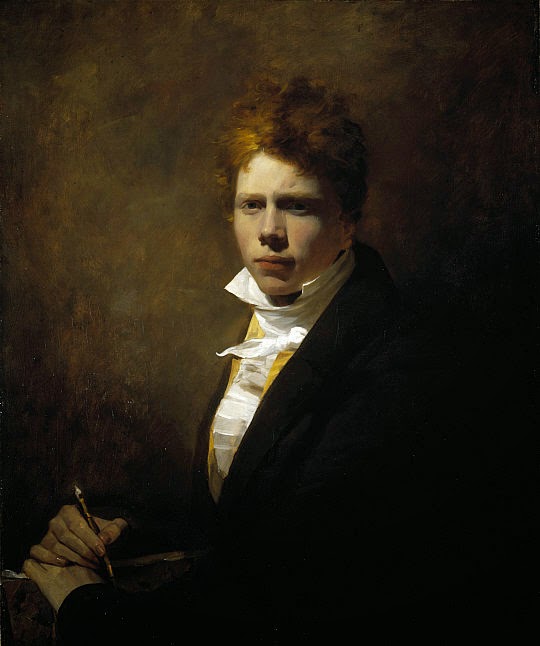Joseph Mallord William Turner, British grand master of water colour painting, the man who bridged the gap between Romantic and Impressionist paintings and generally considered to be one of the art world's all time greats, needs no further introduction - so I will leave it at that.
Joseph Mallord William Turner ( 1799 - Self Portrait )
As far as I have been able to find out he never actually came anywhere near Gibraltar yet he nevertheless produced two paintings in which the Rock makes an appearance. The title of what was chronologically the first of the two - as shown below - is descriptive.
The Rock of Gibraltar with Shipping in the Foreground ( 1830s )
Engraving based on Turner's painting ( 1833 - Turner Edward Finden )
The display caption in the Tate Gallery reads as follows:
With 'Malta', this was one of the first subjects Turner drew for Finden's 'Landscape Illustrations'; it was promised in October 1830. In fact it only appeared as the frontispiece of a re-issued edition of the series, with text by William Brockedon, in 1833. It was probably always intended as an introductory plate, opening up the Mediterranean world described in much of Byron's writing. George Reinagle, who provided Turner's working drawing, had accompanied Admiral Codrington's fleet during the recent campaign for Greek independence.
In the second painting the Rock takes very much a back seat to the overall narrative. In 1840, David Wilkie - with whom Turner seems to have maintained a sort of love-hate relationship, set out on a grand tour which took him to Holland, Germany, Constantinople, Alexandria among other places. On his return voyage he fell ill and never recovered. He died in 1841 and his body was given a sea burial in the Bay of Gibraltar. Turner commemorated the death of his friend by painting the picture below.
Peace. Burial at Sea ( 1842 )
At the time of writing "Peace" was exhibited in the Tate Gallery alongside another painting by Turner with Napoleon as the main subject.
War. The Exile and the Rock Limpet ( 1842 )
Peace shows the burial at sea of Turner’s friend, the artist David Wilkie. The cool palette and saturated blacks create a striking contrast to its pair, War, hung alongside, and convey the calm of Wilkie’s dignified death, compared to Napoleon’s disgrace. The two titles War and Peace are illustrated as abstract concepts, via tone and colour, rather than as actual events. Both works were roundly criticised at the time for their lack of finishing.
David Wilkie ( 1804 - Self Portrait )
The Tate also has on show an engraving of the first picture.
Engraving after Turner - Burial at Sea ( 1859/61 - J. Cousen )
Again, the display caption is quite informative.
This image shows the funeral of Turner’s old friend and colleague, the painter Sir David Wilkie. Wilkie had died on board ship while returning from the Middle East in 1841, and was buried at sea off Gibraltar. With its dominant blackness, the image is presented as a profound meditation on the universal theme of death. However, it also includes a modern paddle steamer billowing smoke in the centre. Turner’s ability to bring together the contemporary and the apparently universal was one of his great strengths.







